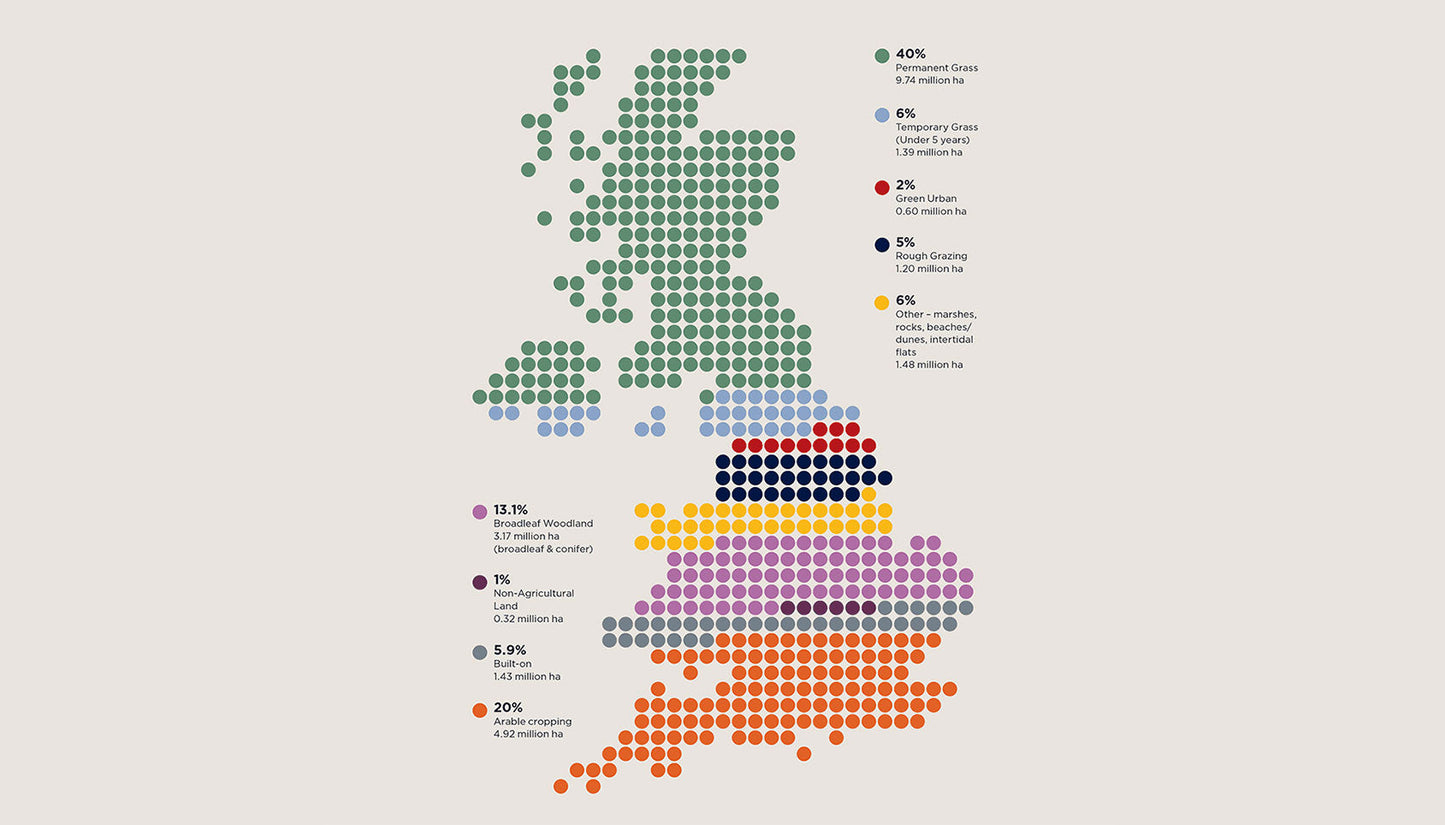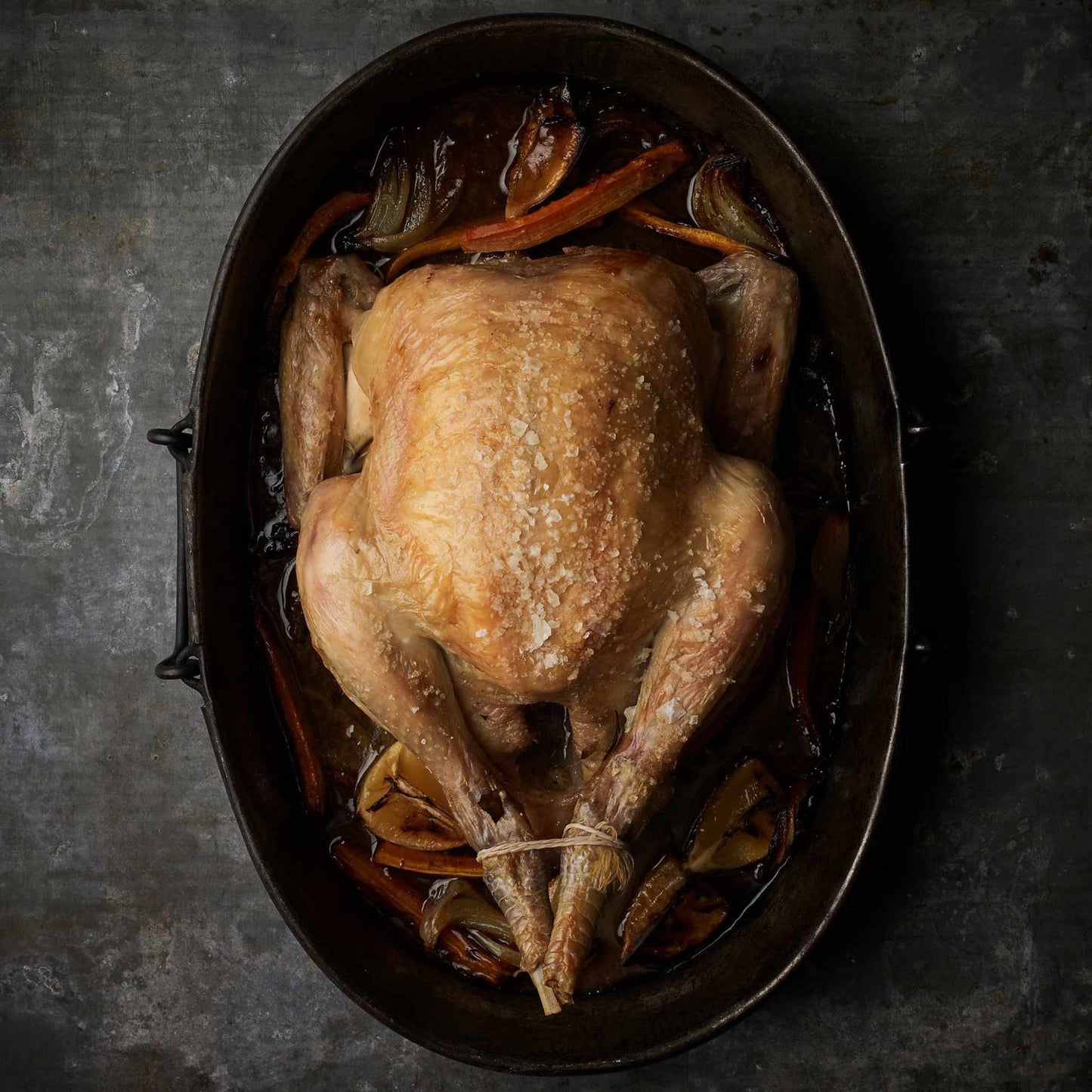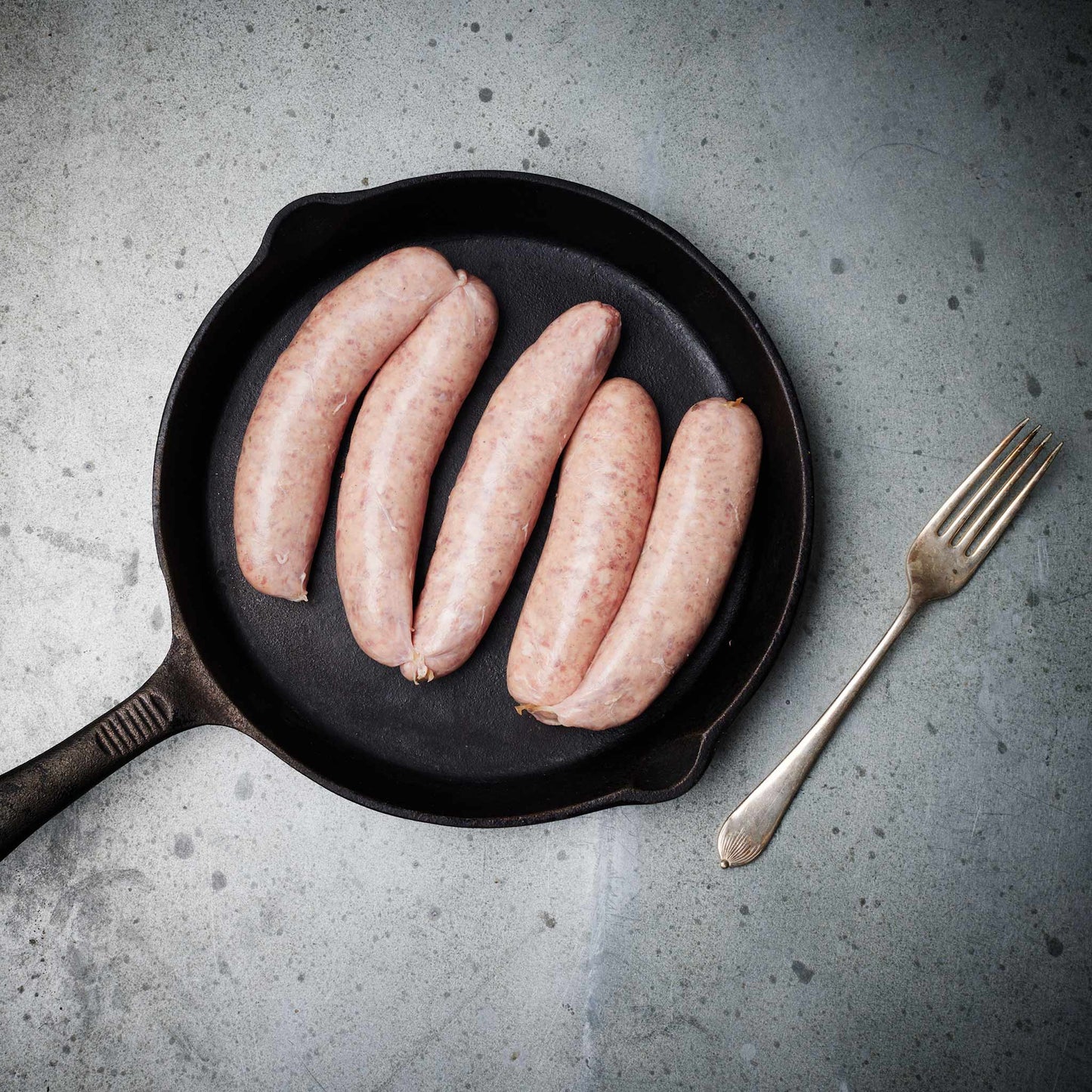We source our chicken from one farm in Leicestershire. The farm is Pasture for Life certified and rears truly free range, outdoor birds.

Why do we eat?
We eat because we have to. It is essential, otherwise we die. From food we derive energy for activity, growth, and all functions of the body, such as breathing, digesting food and keeping warm. We also get materials for the growth and repair of the body, and for keeping the immune system healthy. Food is our fuel.
Our food is composed of three major macronutrients: fats (and oils) carbohydrates and protein.
Do we need all three macros?
It can be argued that only two of these macros are essential for life, these being fats and proteins. Without these we eventually die, whereas the body's requirement for glucose (carbohydrate) can be obtained through a process called gluconeogenesis, where the body makes a small amount of glucose to fuel brain function from taking apart proteins.
Technically speaking gluconeogenesis is a process that transforms non-carbohydrate substrates (such as lactate, amino acids, and glycerol) into glucose. Both lactate and alanine are first converted into pyruvate, which then enters the mitochondrion and is carboxylated to oxaloacetate (OAA) by pyruvate carboxylase (PC). Phew.
However, as non-essential as carbohydrates may be, our bodies crave them as a quick hit energy source and for most, they bring pleasure to the experience of eating.
So back to eating. The reason we farm is because we need to produce food, and a lot of it, because there are a lot of us and we need to produce proteins and fats.
What are our foods made of?
It's rare for any unprocessed food in its natural state to contain only a single macronutrient. Most are heavily biased towards one or more, for example, red meats contain protein, fats and even a tiny amount of carbohydrate. An avocado contains mostly fat and a tiny bit of protein and a little carbohydrate, a leek contains carbohydrate and a tiny amount of protein and a trace of fat – you get the idea.
Proteins are not equal
Proteins are made from building blocks called amino acids. Roughly 500 amino acids have been identified in nature, but just 20 amino acids make up the proteins found in the human body.

Figure above - Structure of an amino acid
Of these 20 amino acids, nine are essential in our diet, and our bodies can make the rest from these 9:
Phenylalanine
Valine
Tryptophan
Threonine
Isoleucine
Methionine
Histidine
Leucine
Lysine
The non-essential, also known as dispensable, amino acids can be excluded from a diet. The human body can synthesise these amino acids using only the essential amino acids.
For most physiological states in a healthy adult, the above nine amino acids are the only essential ones. However, amino acids like arginine and histidine may be considered conditionally essential because the body cannot synthesise them in sufficient quantities during certain physiological periods of growth, including pregnancy, adolescent growth, and recovery from trauma.
Animal protein sources, such as meat, fish, poultry, eggs and dairy, are similar to the protein found in your body.
These are considered to be complete sources of protein because they contain all of the essential amino acids your body needs to function effectively.
On the contrary, plant protein sources such as beans, lentils and nuts are considered to be incomplete, as they lack one or more of the essential amino acids your body needs.
Some sources report soy protein as complete. However, two essential amino acids are only found in small amounts in soy, so it isn’t comparable to animal protein.
To sum up, we absolutely need protein. We can get it from plants but we need combinations of plants to make sure we're getting all nine essential aminos in our diet.
Proteins and calories
The calorie is a unit of energy. For historical reasons, two main definitions of calorie are in wide use. The large calorie, food calorie, or kilogram calorie was originally defined as the amount of heat needed to raise the temperature of one kilogram of water by one degree Celsius (or one kelvin). The small calorie or gram calorie was defined as the amount of heat needed to cause the same increase in one gram of water. Thus, 1 large calorie is equal to 1,000 small calories.
In nutrition and food science, the term calorie and the symbol cal almost always refers to the large unit. It is generally used in publications and package labels to express the energy value of foods in per serving or per weight, recommended dietary caloric intake, metabolic rates, etc.
Back to macronutrients. All three macros have a different caloric measurement, for example fat (lipids) contains 9 kilocalories per gram (kcal/g), while carbohydrates (sugar and starch) and protein contain approximately 4 kcal/g when measured in a laboratory calorimeter.
We've gone into more detail about the role of animal-based proteins in our diet in this article here.
Protein calories are not the same as carbohydrate calories
Carbohydrates come in at 4Kcal /gm but carbohydrates are arguably not essential to life.
Arable agriculture in the UK produces mostly carbohydrates as this is the macronutrient that plants are mostly composed of. The vast majority of these plants are grown in monocultures with very little biodiversity and require repeated ploughing and fertilising of the soil.
While many of the plants we eat carry nutrition other than carbohydrates, we also produce a lot of grains, which are used in a refined state, leaving much of the nutrition behind but not the calories.
We live in a strange time when many people are overfed and undernourished. This means we can be taking in too many calories and not enough nutrients: we can be both obese and malnourished.
Protein is different
In the UK we predominantly get our protein from animal-based foods, meaning meat, dairy and eggs. Mostly these foods are used whole: even if they are processed, the original nutrition bound up with the protein, such as the fat-soluble vitamins, are carried over.
“For every one hundred calories of protein that you eat,” says Dr Giles Yeo, “and it doesn't matter whether it comes from a bean or it comes from a steak, you're only ever able to absorb 70 calories; 30 calories is the cost of doing business and it tends to be lost as heat."
In other words, because protein requires more energy to break down than carbohydrates in the body, we can reduce the calorimeter lab measured caloric value of the protein we are consuming by 30% when considering it the human body.
What about the 18% of calories coming from 70% of farmland?
Across the globe, terrain and climate vary hugely. This affects what can and can't be grown.
Interestingly total land use in agriculture hasn't changed significantly in the last 60 years compared with the population increase. This is due to more efficient farming practices and increasing yields, but it's also worth noting that we currently have the same amount of depleted, unusable farmland as we do farmland that's in use. Clearly our current methods are not sustainable.
If we look at this chart we can see the source of the 18% that is often thrown at us in arguments.

This chart shows that globally, 77% of all farmed land produces only 18% of calories, which sounds like a terrible idea. However these calories are protein, which as we've established is not negotiable and the least caloric macro skewing the figures. The other consideration, and this is a big one, is that this land is not suitable for growing crops; it is marginal land.
We won't go into too much detail about this land usage as we have covered this before, but we would like to look at these figures in the context of the UK and protein.
Food security is a local issue
The figures above are averaged out over the globe. Although useful to know, these figures are meaningless in individual countries as the terrain is varied and the land available will be able to support different crops. Some countries will be able to produce way more plant-based carbohydrate calories and others will on balance be able to support more grazing and animal-based agriculture. The important factor for food security is to think local, not global, and to grow whatever crop of animal can provide the most nutrients for the least impact.
What about the UK?
The agricultural area used in the UK is 23.07 million acres (9.34 million hectares), about 70% of the land area of England.
Of this agricultural land, 36% of the agricultural land is croppable (arable). Most of the rest is grassland, rough grazing or woodland.
This means 64% of farmed land cannot grow crops and is used for animal-based agriculture. This land produces 60% of our protein and the huge majority of our complete protein. It is also rarely ploughed, leaving the soil carbon largely intact. This is food security in the UK.

Percentage contribution (%) of food groups to average daily protein intake in the UK in 2013/2014: adults aged 19–64 and ≥65 years. Source: National Diet and Nutrition Survey Rolling Programme Years 2013–2014 [54].
What about rewilding?
There's a lot of talk in the UK about just leaving some of the land we use for grazing to be rewilded, so what would happen if we took land out of protein production?
If we lose significant areas of the grazing land that currently provides 60% of our protein, that protein will have to be replaced with crop-based inferior protein, putting ever more pressure on the just 34% of our farmed land that is arable.
So does 70% of land produce 18% of calories? Yes, globally, but that figure is meaningless to us, here and now.
In the UK, we have a good balance of roughly 60% and 60%.
Figures quoted in much of this article come from the reference below.
Protein for Life: Review of Optimal Protein Intake, Sustainable Dietary Sources and the Effect on Appetite in Ageing Adults
Globally, plant-based foods are the leading source of protein, comprising 57% of daily protein intake, followed by meat (18%), dairy (10%), fish and shellfish (6%), and other animal products (9%) [16]. In contrast, the main source of protein in the British diet is animal-based, contributing to nearly two thirds of total daily protein intake
https://www.ncbi.nlm.nih.gov/pmc/articles/PMC5872778/
Conclusion:
In the UK two-thirds of our farmed land produces two-thirds of protein, which is an essential nutrient. Farming animals on land that cannot grow crops takes pressure off our remaining arable land, which does not produce protein as efficiently.
To support future food security we need to farm our animal agriculture in the most regenerative way we can.



